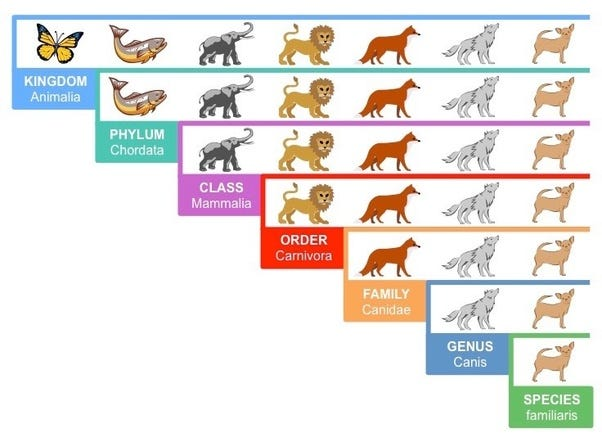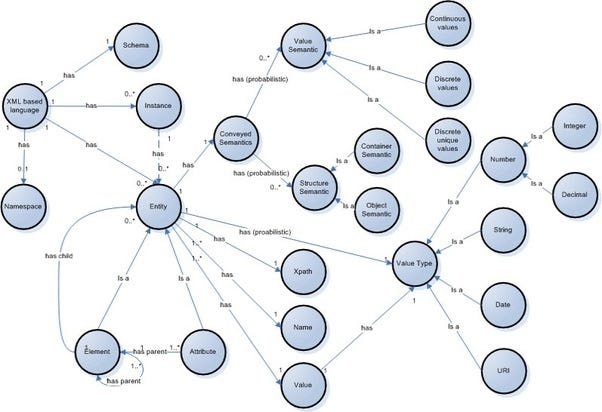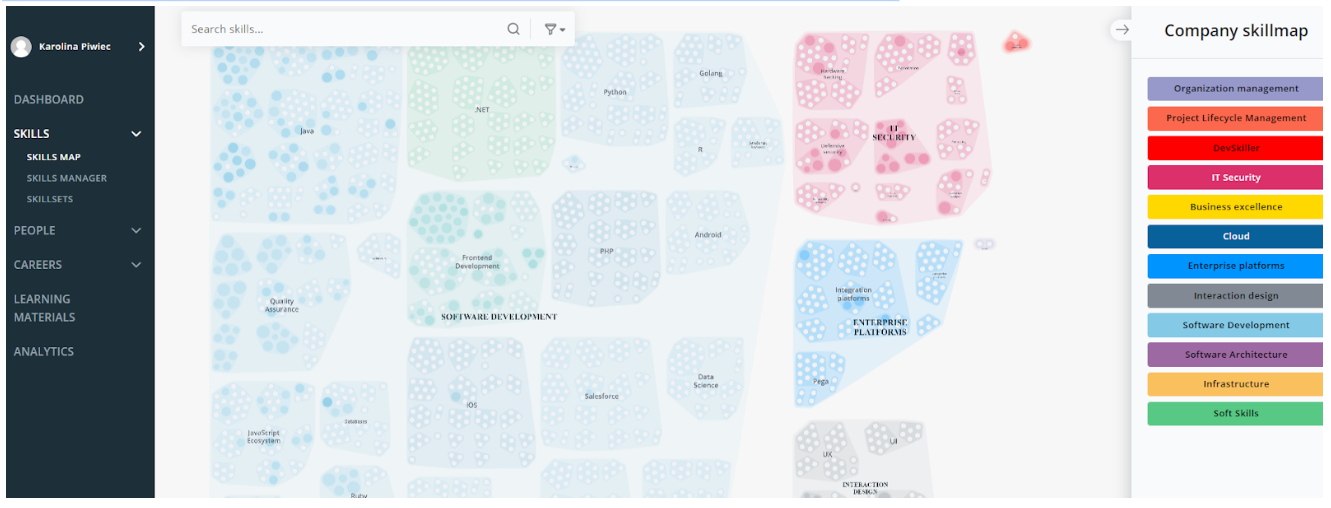Maximizing Talent: How a Skills Ontology Framework Can Benefit Your Organization

As workplaces become more skills-focused, in order to plug knowledge and skill gaps within, businesses are turning to skills-based working models. With that, comes the need for a skills ontology framework. This article will discuss what a skills ontology is, and using, the example of DevSkiller TalentBoost, why such a tool can be crucial to organizing the future of your enterprise.
What is a skills ontology?
The term ‘ontology infer skills’ may sound complex, and, particularly in its original metaphysical sense, it is a little. In relation to business management, a skills ontology refers to sets of skills and the relationship between those skills. In relation to business management, it is a way to easily define the various skills that make up a specific job, rather than relying on traditional job descriptions.
Skills gaps exist because technological advancements outpace the rate at which employees are able to learn the new skills required. So, companies adopt a skills-based workplace modelto organize the learning and development of employees, and skills ontologies allow those companies to easily identify and close skills gaps as they arise. A skills ontology allows enterprises to identify the skills that make up any role and to organize these skills insights into a skills map or skills cloud.
By arranging skills and knowledge development into a structured form, skills ontologies allow for cohesion and relationships between skills and departments, and for learning to become a standardized, everyday practice within the workplace. Thus, creating a process of constantly ongoing professional development.
Tools like DevSkiller TalentBoost take the complex job of organizing the critical skills of an entire organization and structure them into simple skills maps that can be utilized for the ongoing skills development of the whole company. Therefore closing any future workforce skills gap that may appear.
Key benefits of a skills ontology framework
A skills ontology provides many benefits to simplify the workforce management of leading companies:
- Create a common language by which to discuss skills development
- Allows employers to easily update roles with new skills
- Allows employees to take an interest in their own skills development
- Future job announcements can be easily tailored to include new skills
- Assessing employee skills becomes as simple as any other everyday task
- Performance reviews can be approached methodically, with precise performance evaluations—with promotions being based on the achievement of solid learning goals
- Create clear development goals
The 10 benefits of introducing a skills management platform at your organization
Create a common language by which to discuss skills development
A skills ontology creates a common language by which to categorize skills and talk about skills development. Employees can be easily arranged into teams or tribes for given projects. Work is no longer based solely on traditional job descriptions, making for a flexible, more agile workforce.
Allows employers to easily update roles with new skills
The truth is, modern tech roles advance so quickly that it is no good simply hiring someone for a role anymore. That role will have changed before their employment contract is signed. Skills ontologies allow companies to constantly update the skills of any position, allowing employees to keep on developing skills as they arise or for employers to update the skills required for a role continuously.
Allows employees to take an interest in their own skills development
Employees can also take an interest in their personal skills development. They can look at their skill data and personal skills cloud and, along with their employer, they can identify and target specific areas of improvement. Access to simple skills data can give workers a new lease of life in their role, and a chance to improve.
Future job announcements can be easily tailored to include new skills
When it comes to hiring, HR leaders can easily identify and adapt what is required to be able to perform the job responsibilities of a specific role well. Advertised jobs can be updated with the latest skills required.
The creation of a skills map, allows companies to easily identify what is needed from a new hire, to understand skills, and to have the confidence to know what to look for from the shortlisted job candidates.
A skills ontology creates clear development goals
Skills and skill ontologies allow for roles to change and job descriptions to be constantly evolving. For instance, if a new programming language emerges, a basic understanding of that language may need to be factored into the role of front-end developer, for example. A practical environment of learning and development can be created meaning employees target the right skills to work on, to be able to improve their chances of progressing to become a team leader or manager.
Skills ontology vs taxonomy
The terms skills ontology works in taxonomy and skills ontology are often used interchangeably. This is because, to some extent, there is considerable overlap. However, there are subtle but important differences.
What is a skills taxonomy?
A skill taxonomy, is a hierarchical structure of broad and more specific categories. Therefore, a skills taxonomy is used to organize categories of skills, relevant to their position within skill sets.

Source: Medium.com
“A skills taxonomy is a structured list of skills defined at the organization level that identifies the capabilities of a business in a quantifiable way. Essentially, it is a system that classifies skills within an organization into groups and clusters other skills.”—AIHR
A skills ontology is a less rigid approach to organizing how different skills are within a given category. A skills ontology allows employees to be able to map the connections between different skills in a more detailed way.
“Taxonomies can retrieve a spreadsheet file, whereas ontologies can retrieve data from individual cells in the spreadsheet. Ontologies can traverse data in a database.“— The Accidental Taxonomist
This example shows an ontology framework. Notice how there is no hierarchical structure, allowing for a much more fluid outcome.

Source: Medium.com
The example below shows the DevSkiller TalentBoost skills ontology framework. Within the skills map (software development) there are skill sets (Java, .Net, Python) and within each skill set, are individual skills. By arranging skills in this way (and not in a taxonomical format), TalentBoost skill ontology, is able to show the direct relationship between skills in the ‘.Net’ or ‘Java’ skill sets, but also show how those skill sets are connected under the wider umbrella of ‘software development’.

Source: DevSkiller
How skills ontologies like DevSkiller TalentBoost impact hiring
Source: Youtube
With the use of artificial intelligence, talent management platforms like TalentBoost can have a profound impact on an organization.
Read: Consideration factors when choosing a Talent management solution
Accelerate employee development
Being able to provide employees with actionable feedback, allows for conversations about specific areas of development within the workforce. Meaning, that employees are given a tangible road to success. Not only linear success. An ontological framework allows companies to easily identify those employees with the most potential working in other teams or sectors. In a taxonomical working model, it is harder to identify potential outside your immediate scope of interest. As a result, internal mobility increases and it becomes easier to fill skills gaps by looking in-house.
Cut talent acquisition costs
Talent acquisition costs can be cut dramatically by employing a talent management tool like TalentBoost. Not only is it easier for HR leaders to define the exact skills needed for a role when making new hires; but it also becomes easier to upskill and reskill workers already with the organization. Hiring managers are able to clearly identify in which areas an employee can strengthen their skills, in order to be considered qualified for a different role.
Boost employee morale among the existing workforce
Talent management platforms boost employee morale in that current employees feel their talent development and needs are being considered and that they have a clear path of progression.
Fast-track talented employees
Talent management platforms allow organizations to fast-track those employees that demonstrate the most skills relate the most potential. Meaning the best employees are selected to progress quickly.
Final thoughts
DevSkiller TalentBoost is a skills management software built to define, measure, and manage digital skills. It uses an advanced skills ontology framework, to identify the precise areas an organization’s employees can progress. This model is agile and adaptable in the sense that as new technologies arise and develop, which they do every day, the framework is able to adapt and keep up with the rapidly moving pace of modern business.
Find out more about DevSkiller TalentBoost
Share post